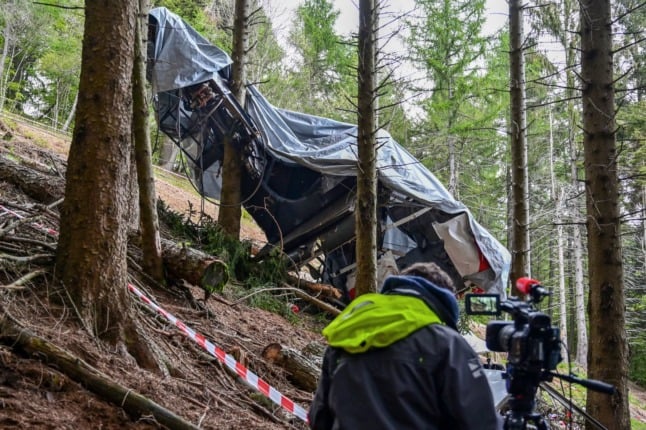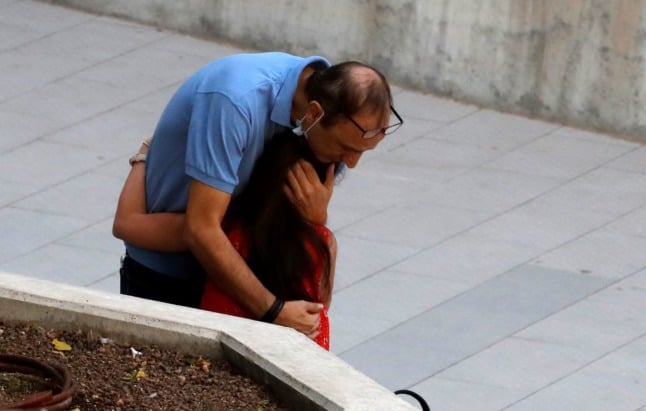DOPING
Norwegian skiers test if altitude is like doping
Eleven Norwegian downhill skiers are spending a month living at 2,200m while training deep in a valley to test whether high altitude training has a similar effect on performance to doping.
Published: 3 August 2015 22:58 CEST

The skiers travel down into the valley every day by cable car. Photo: matramurena/Flickr
For the experiment, which ends in mid-August, the skiers, aged 18 to 25, are spending most of their days at the Plan de l’Aiguille refuge near Chamonix on the slopes of Mont Blanc.
They will then take a morning cable car down into the valley, where they will undergo an intensive training regime alternating inline skating, running, weight training, cycling and swimming.
In the afternoon they return to the refuge and spend the rest of the day and night at an altitude where oxygen levels are 20 percent lower than at sea level.
“My pulse is much higher, and I can feel my shortness of breath,” said Eirik Sømen, 18, a participant in the experiment.
Once the month of training is over, Eirik, Tonje, Ola and their cohorts will return to Lillehammer, where they’ll undergo a battery of tests measuring their athletic performances, the volume of red cells in their blood, maximal oxygen intake and other criteria.
The objective is to verify whether “endurance performance is increased” after living at high altitudes while training at lower levels, says Paul Robach, a professor and researcher at that National School of Skiing and Mountaineering in Chamonix.
“There’s less oxygen at higher altitudes (so) the body reacts by creating more red cells. And in sport, the more red cells there are, the better it is — marathons are run faster, endurance is improved.”
Interest in the impact of altitude on performance arose during the 1968 Olympic Games in Mexico City, which is 2,250 metres above sea level. Since then, the effect of altitude in sports has been “a hotly debated topic, relying on some somewhat unfocused literature and studies that haven’t always been tightly controlled,” Robach said.
One study conducted in 1997 by Professor Benjamin Levine of the University of Texas Southwestern in Dallas, showed improved performance of athletes who lived at higher altitudes while training closer to sea level.
“But the data isn’t always as ‘clean’ as we might hope for in this kind of study, which is why we want to replicate it,” said Carsten Lundby, a University of Zurich professor who is participating in the Chamonix experiment.
To safeguard the scientific validity of the results, a control group of nine athletes residing only in the lower valley is undergoing the same training regime as those returning to the Plan de l’Aiguille refuge every afternoon.
It remains to be seen whether the two group’s performances will differ significantly from one another at the end of the month of training.
That question is one of utmost importance, because “training at high altitude is an alternative to doping, (and) is therefore of great interest to athletes,” says Robach.
A previous study using hypoxic (low oxygen) chambers carried out by the National Centre of Downhill Skiing near the Swiss border did not produce significant performance effects on participating cyclists.
One explanation advanced for that is that elite athletes “are maxed out in all ways. They’ve trained every day for many years, and already have an enormous volume of red cells,” offers Robach.
But with new measurement instruments, “we can detect a change of even one percent in the quantity of red cells,” notes Lundby, who nevertheless warns against expecting anything revolutionary from their testing.
“I would be very surprised if we find an important influence” of higher altitude on the Norwegian skiers living at the refuge, Lundby says. “But we’ll see.”
The research team in Chamonix hopes to be able to present its results during the first half of 2016.
Url copied to clipboard!




 Please whitelist us to continue reading.
Please whitelist us to continue reading.